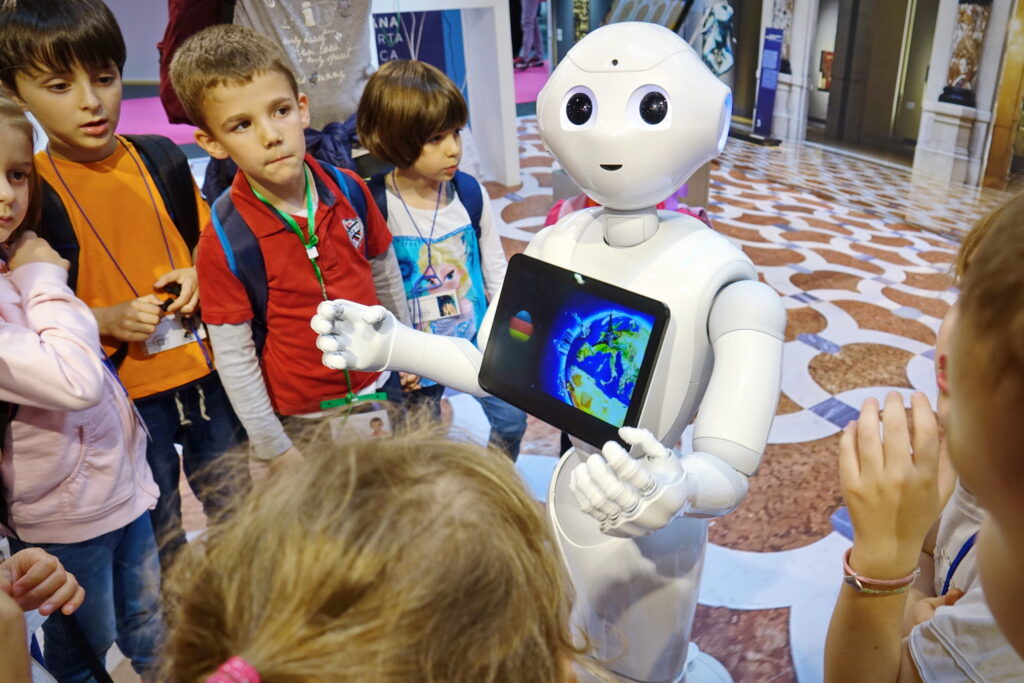In a quiet classroom in London, something extraordinary happened. A child who had never spoken a word in class turned to a small humanoid robot beside them and said, “Hello.” For parents and teachers, this moment wasn’t just heartwarming it was revolutionary. Welcome to the world where AI robot for special education is changing lives.
While AI powered tutors dominate today’s EdTech headlines, they often overlook neurodiverse students children with autism, speech delays, or cognitive differences. Their learning journey is far from linear and demands a flexible, personalized approach. That’s why a recent pilot project by Nord Anglia Education, involving a socially assistive robot, is capturing global attention.
Why Traditional Tech Doesn’t Work for All
Most educational technologies are designed with neurotypical learners in mind. Adaptive testing, gamified learning, and data driven insights are excellent, but they can fall flat when it comes to students who don’t communicate in traditional ways. “Children with autism spectrum disorder or speech impairments need emotional connection, consistency, and non judgmental interaction,” says Dr. Lina Farouk, a child psychologist specializing in assistive learning.
Human educators often struggle to provide 1-on-1 attention due to time and resource constraints. On the other hand, traditional AI platforms lack empathy, tone recognition, or the ability to interpret non verbal cues. That’s where an AI robot for special education offers a unique blend of structured consistency and emotional interaction.
Nord Anglia Education’s Pilot with AI Robots
Nord Anglia Education launched a pilot program across several of its global campuses using socially assistive robots like “Kaspar” and “Milo,” specially designed for children with additional learning needs. These robots use AI to read facial expressions, respond with empathy, and adapt their language and tone to match the child’s comfort level.
What Happened?
Silent children began speaking: Several students who had not spoken in class before initiated conversations with the robot. Improved emotional regulation: Children with anger outbursts calmed faster when the robot guided them through breathing exercises.
Students stayed focused on learning tasks 60% longer when interacting with the robot. “The robot doesn’t judge. It’s always patient. That makes all the difference” said Ms. Emily Carter, a SEN (Special Educational Needs) teacher involved in the trial.
Expert Opinions on the Rise of Social Robots
Experts across the globe are now analyzing how these AI driven companions can augment human led teaching. Unlike chatbots or apps, these robots occupy physical space, make eye contact, and respond to touch, which is crucial for students with sensory integration needs.
“Socially assistive robots can become bridges between silence and speech, especially for children who struggle with human interaction,” explains Prof. Kenji Matsuda, robotics and education specialist at Tokyo University.
Moreover! these robots are not meant to replace teachers but to assist them by filling the gaps where consistent patience and emotional detachment are necessary. When a child fails to respond, the robot simply repeats, never showing frustration a critical trait when working with emotionally sensitive children.
A Mother’s Journey
Mrs. Hannah Reeves, a mother from Manchester, recalls how her 6 year old autistic son, Leo, spent two years in speech therapy with little progress. But after just three months of sessions with an AI robot for special education, he began forming words. “Leo looked at the robot like a friend. He wasn’t scared or overwhelmed. And one day, he said, ‘Hi, Milo,’ and I broke down in tears.”
Such personal stories highlight the emotional and psychological breakthroughs possible when children are given the right tools, not just standardized ones.
There’s a scientific basis for this success. The consistent voice tone, predictable behavior, and non judgmental responses from AI robots create a safe sensory environment. For children who are easily overstimulated or anxious around people, robots provide:
Same behavior every time
Controlled interaction: Responses tailored to comfort level
Reduced social pressure: No fear of judgment or expectations
Combined, these factors help build trust, the essential first step toward learning, especially in neurodiverse education.
Furthermore! AI algorithms collect data over time to better understand each child’s triggers, communication style, and progress. This real time feedback loop makes the intervention increasingly personalized, something even human teachers may find challenging without technological support.
While still in early adoption, the potential for AI robots for special education is massive. Countries like Japan, the UK, and the UAE are experimenting with these robots not just in schools, but also in clinics, therapy centers, and even homes.
Cost and accessibility remain challenges, but as technology becomes more affordable, we could see these robots become mainstream, especially in public school systems struggling with special education staffing shortages.
“If we invest in the right AI now, we can prevent a whole generation of neurodiverse students from being left behind,” says Dr. Sameer Raza, education policy advisor at UNESCO.
A Silent Revolution
The success of socially assistive robots is a reminder that real inclusion begins with listening, even when a child hasn’t yet spoken. An AI robot for special education may not be the loudest innovation in EdTech, but it’s quietly becoming one of the most impactful.
We’re not just teaching silent kids to speak we’re giving them the confidence to be heard.

